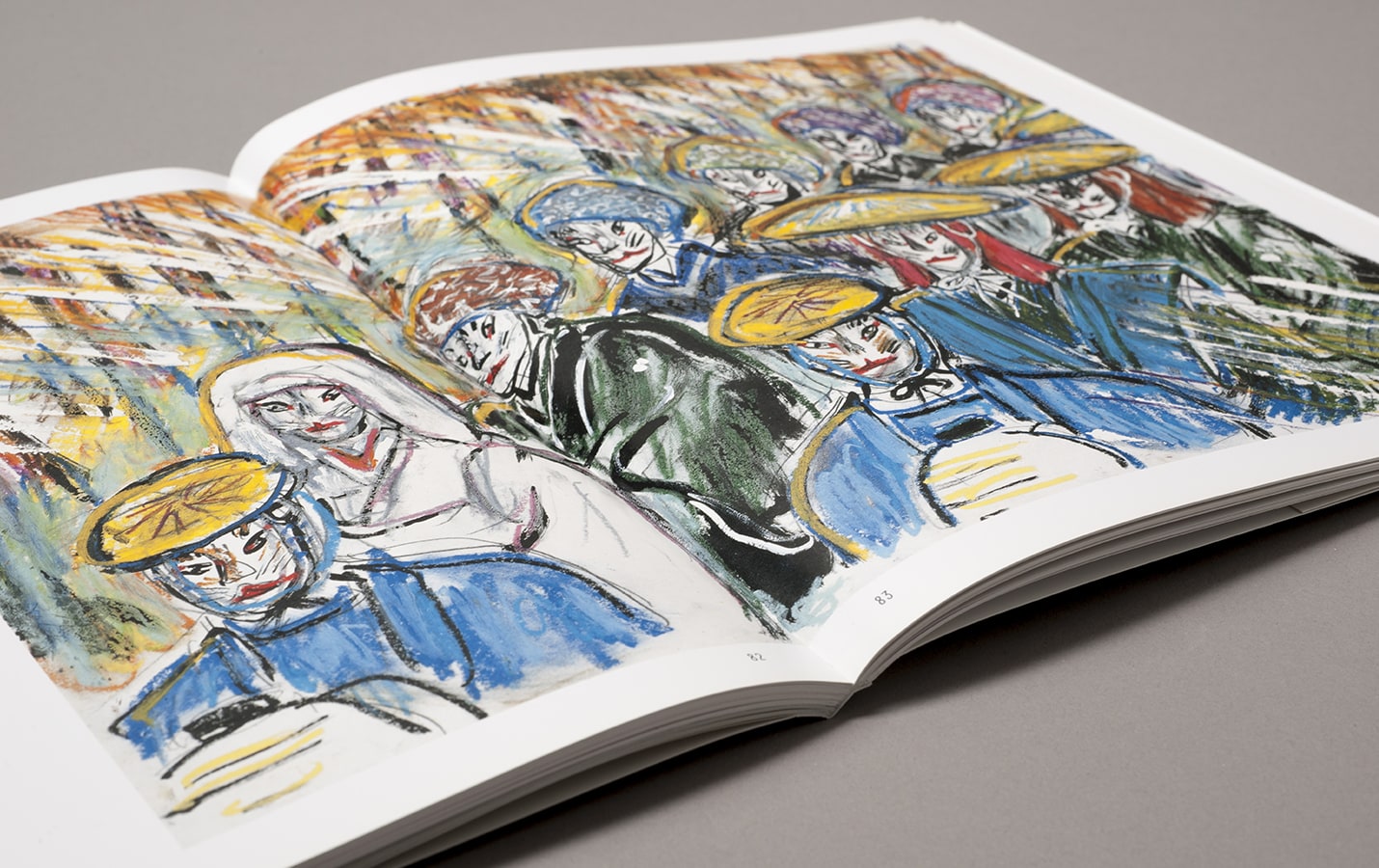February 10 - April 26, 2009
The exhibition of 87 extraordinary works by one of the most important masters of world cinema, Akira Kurosawa, presented a different aspect of the director’s talent; while introducing his envisioned films, the exhibition explored Kurosawa’s imagination through his drawings.
Kurosawa, who is inspired by both Japanese and Western cultures, particularly by the great masters of European art such as Van Gogh, Cézanne and Chagall, creates a bridge between the Far East and the West taking us on an enchanting journey into a world of breathtakingly unique images.
The storyboards of the films Ran, Kagemusha, Yume, Madadayo and Umi Wa Miteita exemplify the preparatory stages and illustrate frame by frame, scene by scene the films, revealing the artistic value of Kurosawa’s drawings and emphasizing his expressionism.
“There are a multitude of things that I think of when I draw storyboards. The setting of the location, the psychology and emotions of the characters, their movement, the camera angle needed to capture those movements, lighting conditions, costume and props… Unless I think of the specifics of all those things, I cannot draw the picture. Or, perhaps it’s more accurate to say, that I draw the storyboards in order to think about those things. In this manner, I solidify, enrich, and capture the image of each scene in a film until I see it clearly. Only then do I proceed with the actual shooting.”
Exhibition Catalogue

The exhibition Akira Kurosawa: Drawings, offered visitors the opportunity to discover a different talent while introducing Kurosawa’s dream films through his drawings. Kurosawa inspired...

The exhibition Look at Me! Portraits and Other Fictions from the ”la Caixa” Contemporary Art Collection examines portraiture, one of the oldest artistic genres, through a significant number of works of our times. Through the exhibition we will be sharing about the artists and sections in “Look At Me!”.

The Suna and İnan Kıraç Foundation’s Orientalist Painting Collection includes two children’s portraits that are often featured in exhibitions on the second floor of the Pera Museum. These portraits both date back to the early 20th century, and were made four years apart. One depicts Prince Abdürrahim Efendi, son of Sultan Abdulhamid II, while the figure portrayed on the other is Nazlı, the daughter of Osman Hamdi Bey.
Tuesday - Saturday 10:00 - 19:00
Friday 10:00 - 22:00
Sunday 12:00 - 18:00
The museum is closed on Mondays.
On Wednesdays, the students can
visit the museum free of admission.
Full ticket: 300 TL
Discounted: 150 TL
Groups: 200 TL (minimum 10 people)